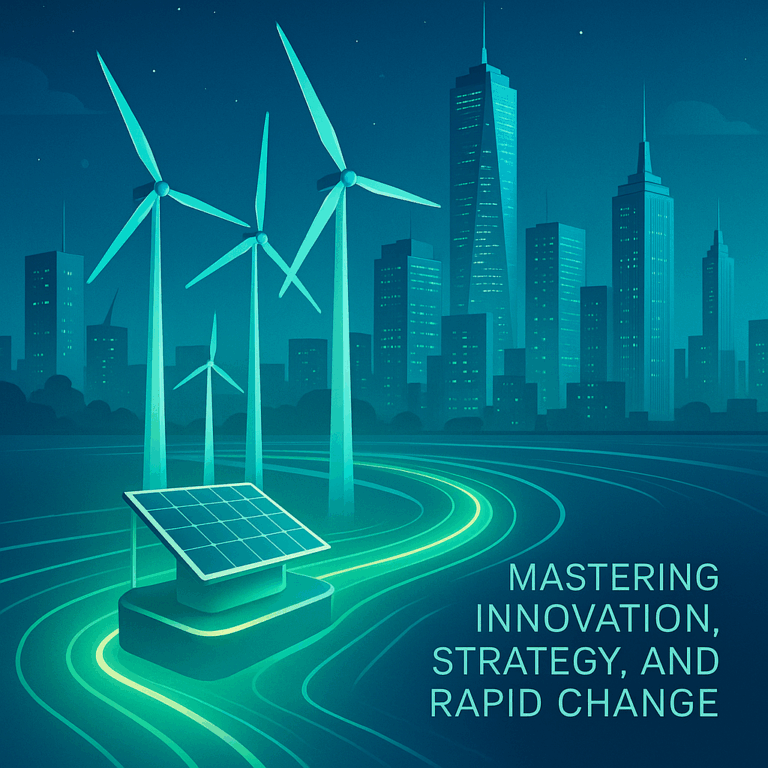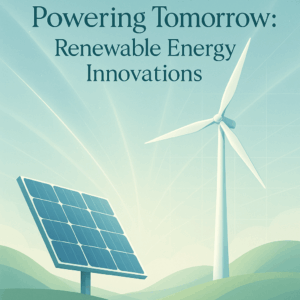Decoding the Energy Business: Where Strategy Meets Innovation
Navigating the energy business today is akin to sailing a ship through ever-shifting waters—where technology, policy landscapes, and consumer expectations relentlessly evolve. For those of us embedded in this dynamic arena, understanding and leveraging **energy technology**, **industry trends**, and **energy policy** is not just beneficial; it’s absolutely essential. Whether you’re an aspiring entrepreneur or a seasoned executive, mastering these elements is your ticket to success and sustainability.
Harnessing Technology for Competitive Advantage
The energy sector is undergoing a renaissance, driven by breakthroughs in **renewable energy innovations** and digital transformation. Technologies such as AI-driven grid management, blockchain for energy trading, and IoT-enabled monitoring are no longer futuristic concepts—they’re operational standards that elevate **productivity** and business efficiency.
For example, smart grids empowered by AI reduce transmission losses and optimize resource allocation in real-time—a clear **business solution** that translates to cost savings and greener footprints. Companies investing early in these technologies gain competitive advantages that ripple across operational efficiency, customer satisfaction, and regulatory compliance.
Consider the case study of a mid-sized utility company that integrated predictive analytics to enhance load forecasting. The result? A remarkable 15% reduction in operational costs and improved reliability metrics, illustrating how technology adoption directly correlates with performance uplift.
Leadership in the Era of Energy Transition

Strong **leadership** is the linchpin in the energy sector’s transformation. Leaders must not only be visionaries but also adept at steering their organizations through rapid change while fostering a vibrant **workplace culture** that embraces innovation and resilience. It’s about balancing risk management with agile decision-making.
One effective leadership strategy is adopting a culture of continuous learning to stay ahead of the infinite permutations of policy shifts and tech advancements. Great leaders empower teams to question legacy processes and prioritize sustainability—a mindset shift pivotal for embedding **sustainability in business** models.
Take a page from a global energy conglomerate whose executives championed a top-down approach to sustainability. By embedding green goals into KPIs and incentivizing innovation internally, the company witnessed a surge in employee engagement and an impressive 30% increase in new clean-tech project launches over two years.
Energy Policy: The Invisible Hand Guiding Industry Trajectories
Understanding **energy policy** is not just for government insiders. For energy businesses, policy frameworks dictate investment flows, market access, and technology deployment. Staying abreast of regulatory milestones and incentives can unlock new opportunities and mitigate operational risks.
Energy policy acts as a strategic compass. For instance, policies supporting decarbonization often spur investments in renewables and energy storage—leading to **business solutions** that align ecological goals with profitability. Companies that proactively align with evolving policies often secure preferential financing or market positioning.
In one illuminating case study, an energy startup specializing in battery storage capitalized on emerging subsidies, enabling rapid scaling and market penetration. Their story reinforces the critical nature of policy literacy in shaping business trajectory.
The Human Element: Cultivating Productivity and Culture
Energy businesses are inherently complex, involving diverse teams from engineers to policy analysts. Hence, fostering a collaborative **workplace culture** that promotes transparency and innovation drives **productivity** and employee retention.
Practical steps include flexible work models, fostering cross-disciplinary collaboration, and rewarding creative problem-solving. A culture that respects input from all levels often uncovers novel approaches to longstanding energy challenges, from grid resilience to customer engagement.
For instance, a regional utility revamped its culture by integrating “innovation hours” where teams ideate without constraints. This seemingly simple pivot yielded multiple patent filings and operational improvements within a year—a testament to how culture catalyzes tangible business outcomes.
Entrepreneurship and Sustainability: The Future of Energy Business
Startups and entrepreneurs wield outsized influence in driving **renewable energy innovations** and **sustainability in business**. Agility and risk tolerance allow them to experiment with emerging models like peer-to-peer energy trading or modular microgrids.
For budding entrepreneurs, the advice is clear: marry deep market insights with cutting-edge technology and policy understanding. Build partnerships that extend beyond traditional boundaries—collaborating with incumbents, policymakers, and technologists to co-create scalable solutions.
One inspiring success story is that of a clean-tech startup that began as a small incubator project and leveraged policy grants to pilot a decentralized solar platform. Their journey underscores how integrating business acumen with technical innovation and policy alignment propels startups from niche players to industry disruptors.
Final Sparks: Actionable Insights for Energy Business Enthusiasts
If you’re energized by the prospect of making an impact in the energy sector, here’s a distilled playbook from the intersection of strategy, policy, and innovation:
– **Stay Informed and Agile:** Regularly track emerging **industry trends** and policy changes. Use insights as tools to pivot business models and strategies.
– **Invest in Technology:** Prioritize **energy technology** that enhances operational efficiency and customer engagement. Don’t view tech as cost—but as an investment in resilience and growth.
– **Lead with Vision and Empathy:** Cultivate a **workplace culture** that balances accountability with autonomy. Make sustainability a core leadership pillar.
– **Engage Policy Experts:** Build relationships with policy influencers and regulatory bodies. Policy literacy translates to competitive positioning.
– **Embrace Sustainability as a Business Imperative:** Align your **business solutions** with environmental goals. Customers, investors, and communities increasingly demand this congruence.
As the energy landscape continues to morph, remember that success isn’t just about keeping pace but setting the pace. The right fusion of visionary leadership, technology adoption, policy savvy, and culture-building spells the difference between surviving and thriving—because in the energy business, transformation is the only constant.


